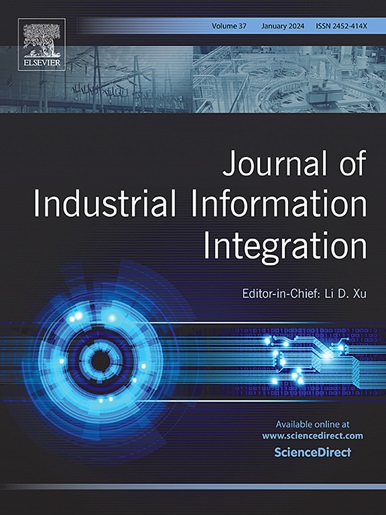Humanitarian relief supply chain performance measurement: A framework and validation
IF 10.4
1区 计算机科学
Q1 COMPUTER SCIENCE, INTERDISCIPLINARY APPLICATIONS
引用次数: 0
Abstract
The concept of humanitarian relief supply chain management has gained a lot of interest among academics and practitioners since the number of natural or human-made disasters has increased drastically. Humanitarian organizations assist in disaster relief operations by planning, sourcing, procuring, transporting, and distributing essential goods and services during emergency operations, known as the humanitarian relief supply chain. This research develops a Bayesian belief network-based framework for predicting the performance of the humanitarian relief supply chain in case of catastrophic events, such as natural disasters and man-made crises. The study begins with identifying performance metrics through factor analysis that directly or indirectly affect the overall performance of a humanitarian organization. Then, with the aid of a Bayesian belief network, a probabilistic graphical model capable of predicting any organization's relief supply chain based on performance metrics was developed. The model demonstrates the interdependencies among the performance metrics within a network setting. The network is constructed through mediating variables by establishing causal relationships among performance metrics and mediating variables. The model has been validated through numerical examples, extreme condition testing, scenario analysis, sensitivity analysis, and diagnostics analysis. Extreme condition tests, diagnostic, and scenario analysis validate the model as reliable and stable. The sensitivity analysis result shows financial performance and monetary support as crucial factors in measuring the performance of the humanitarian relief supply chain. The performance measurement model will assist organizations' decision-makers and policymakers in controlling, monitoring, and enhancing their relief supply chain.
人道主义救援供应链绩效评估:框架与验证
由于自然灾害和人为灾害的急剧增加,人道主义救济供应链管理的概念引起了学术界和实践者的极大兴趣。人道主义组织通过在紧急行动期间规划、采购、采购、运输和分发基本物品和服务,即人道主义救济供应链,协助救灾行动。本研究开发了一个基于贝叶斯信念网络的框架,用于在灾难性事件(如自然灾害和人为危机)的情况下预测人道主义救济供应链的绩效。该研究首先通过直接或间接影响人道主义组织整体绩效的因素分析确定绩效指标。然后,借助贝叶斯信念网络,建立了一个基于绩效指标的概率图模型,该模型能够预测任何组织的救济供应链。该模型演示了网络设置中性能指标之间的相互依赖关系。通过建立绩效指标与中介变量之间的因果关系,构建中介变量网络。通过数值算例、极端工况测试、情景分析、灵敏度分析和诊断分析对模型进行了验证。极端条件测试、诊断和场景分析验证了该模型的可靠性和稳定性。敏感性分析结果表明,财务绩效和货币支持是衡量人道主义救援供应链绩效的关键因素。绩效评估模型将帮助组织的决策者和决策者控制、监测和加强他们的救济供应链。
本文章由计算机程序翻译,如有差异,请以英文原文为准。
求助全文
约1分钟内获得全文
求助全文
来源期刊

Journal of Industrial Information Integration
Decision Sciences-Information Systems and Management
CiteScore
22.30
自引率
13.40%
发文量
100
期刊介绍:
The Journal of Industrial Information Integration focuses on the industry's transition towards industrial integration and informatization, covering not only hardware and software but also information integration. It serves as a platform for promoting advances in industrial information integration, addressing challenges, issues, and solutions in an interdisciplinary forum for researchers, practitioners, and policy makers.
The Journal of Industrial Information Integration welcomes papers on foundational, technical, and practical aspects of industrial information integration, emphasizing the complex and cross-disciplinary topics that arise in industrial integration. Techniques from mathematical science, computer science, computer engineering, electrical and electronic engineering, manufacturing engineering, and engineering management are crucial in this context.
 求助内容:
求助内容: 应助结果提醒方式:
应助结果提醒方式:


